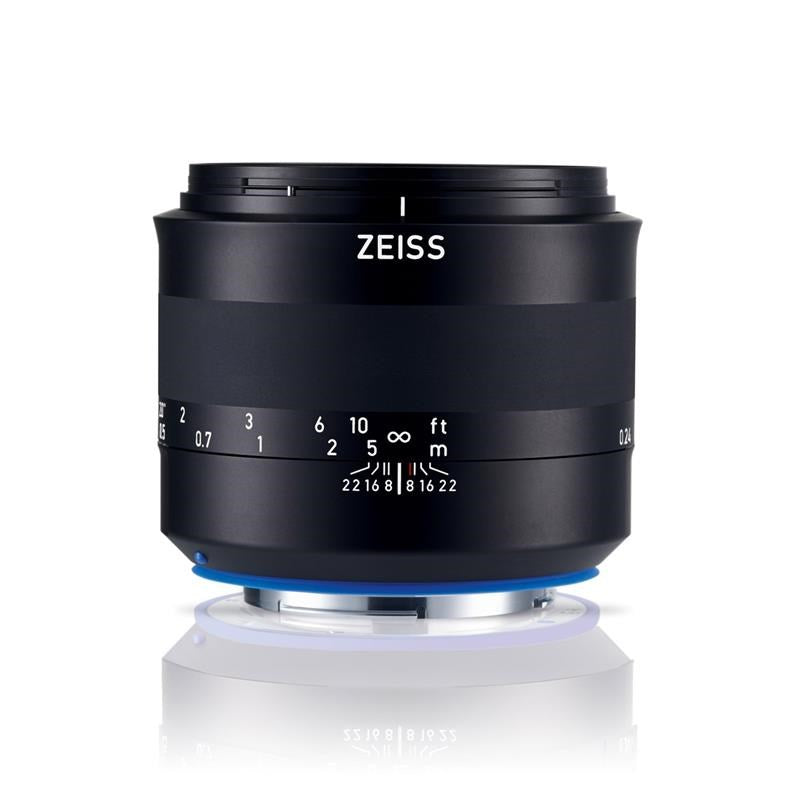Product Description
Zeiss Milvus 50mm F2 camera lens For Canon
ZEISS Milvus prime lenses are built specifically with the modern high-resolution multi-function Canon or Nikon DSLR in mind. Outstanding micro-contrast, high suppression of flares and ghosting - you will be impressed with the consistently brilliant images you capture with these lenses. With its weather-sealed barrels and lens mounts, ZEISS Milvus lenses can be used in a wide range of conditions. The variety of focal lengths will suit the photographer or moviemaker who wants both precise control and stunning results.

The ZEISS Milvus 2/50M macro lens is ideal for rendering tiny features in breathtaking close-up detail. Reflecting the world in a drop of water or revealing the cells in a leaf, the intriguing macro images will take you beyond what your eye can see. Widely used for a natural look with astounding details in traditional portraits, it is ideal for many other applications thanks to its excellent performance at all ranges. Even in critical lighting situations, ghosting and flare effects are practically eliminated due to the further optimized lens coating. Highlight even the smallest details with the fastest 50mm full-format macro currently on the market.

Creative still and video photography through precise, manual focusing
Manually focusing a lens means controlling and therefore actively composing an image gently and precisely from your fingertips. Here, a good ergonomic design makes all the difference. ZEISS Milvus lenses feature a large rotation angle which enables pinpoint focusing. The top-quality focusing mechanism moves smoothly without backlash, optimally supporting the photographer's creative interplay with the focal plane of high-speed fixed focal lengths. Changes are immediately visible in the viewfinder or display. The engraving in meters and feet and the focus scale provide additional support for manual focusing. The silent, continuous aperture setting (de-click function with ZF.2 mount) and the long focusing range lay optimal conditions for video photography.

Future-proof solution for high-resolution camera systems
The excellent image performance of the ZEISS Milvus lenses is sharply focused on the requirements of current and future high-performance digital cameras. Thanks to the low level of stray light allowed by the lens design, high-contrast images are also possible with increasing high dynamic ranges of the sensors (HDR). The minimization of coma, astigmatism and spherical aberrations enables constant high resolution over the entire image field. The optics are designed to ensure full utilization of the performance provided by high-resolution camera systems. Regardless of what the future holds, with the Milvus lenses from ZEISS you are optimally equipped any time, any place.

Excellent imagery, even in difficult light conditions
All lenses feature a T*® antireflective coating from ZEISS. Outstanding stray light reduction is achieved by combining a number of optimally matched measures. In addition to the ZEISS T* coating, all lens edges are provided with a special pitch-black lacquer in a complex manual process. Light traps in mechanical components and specially designed surfaces are integrated to prevent the occurrence of reflections. Each focal length has its own individual optical design with the use of special types of glass displaying anomalous partial dispersion. This reduces the occurrence of colour fringes at high-contrast edges of subjects to an absolute minimum.

Stable image performance over the entire focusing range
State-of-the-art camera systems and high-resolution digital image sensors are now demanding more and more performance from the lenses. The Floating Elements Design permits constantly high image performance in the focal plane from the minimum object distance to infinity. This is accomplished by changing the axial distance between individual lens elements or element groups. The adjustment of the element spacing is coupled to the distance setting so that it always results in the right correction. The mechanical design of the ZEISS Milvus lenses is highly complex and the workmanship must be extremely exact - both specialities of ZEISS.

Long-lasting product with protection against environmental influences
An optimized ergonomic design enables fatigue-free photography and reduces camera shake. The all-metal housing makes every adjustment a haptic experience. The dynamic, precise barrel design sets new trends in the world of camera lenses. However, the ZEISS Milvus lenses will impress you not only due to their visual and haptic excellence, but also thanks to their inner qualities. Special seals for protection against dust and splashes expand the photographer's creative potential by guaranteeing the system's functional reliability even in environmentally difficult situations.



























